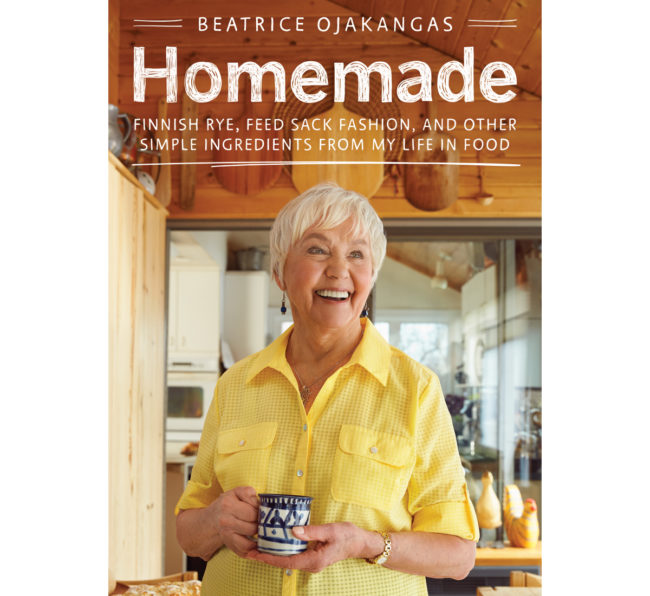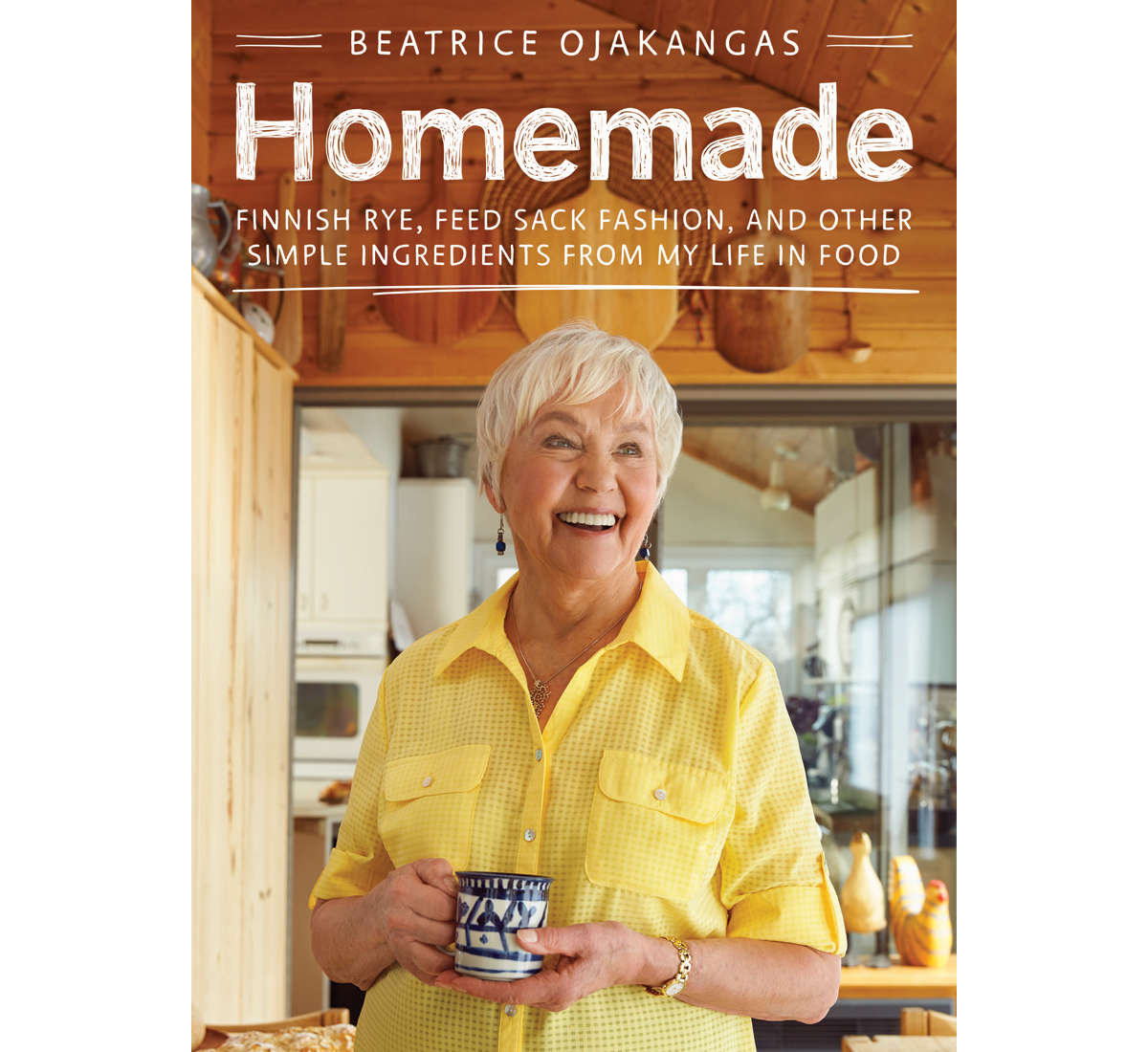 This story is sponsored by the University of Minnesota Press.
This story is sponsored by the University of Minnesota Press.
Author Beatrice Ojakangas launches her new book, Homemade: Finnish Rye, Feed Sack Fashion, and Other Simple Ingredients from My Life in Food, next week.
Please join us for the launch of Beatrice’s book on Wednesday, October 12 at 5:30 p.m. at the American Swedish Institute. Find more information here.
“Beatrice Ojakangas has long been my personal cookbook hero. Her life story, told with candor and dry wit, describes what could be nine lives in the world of food and cooking — all of them riveting. From her mother’s cardamom-scented rural kitchen, to the editorial offices of the famed Sunset magazine, to her rightful place cooking alongside Julia Child, to her Minnesota kitchen where she authored twenty-nine (now thirty!) cookbooks, this book proves that Beatrice Ojakangas is not only one of this country’s most important food writers, but a national treasure. As I read, I laughed, got very hungry, picked my rhubarb, wept with fondness, and then I did what she’d want me to do: I pulled myself together, tied on an apron, and preheated my oven.” — Amy Thielen, author of The New Midwestern Table
Salt Cake: Excerpted from Homemade
I was about five years old and I had already discovered that it was far more pleasurable to satisfy the wishes of my parents than to rebel. Maybe it was because my mother had lost her own mother at the age of five and grew up under the scolding hand of her stepmother that I wanted to please her. She must have told me stories about how she was physically and mentally abused, though I don’t recall too much because the stories were so gradually revealed. The upshot, though, was that I carried the vision of the wicked stepmother in my mind. My mom would tell me more about her early childhood in bits and pieces much later.
She always referred to “Stepmother” when she talked about the woman who had replaced her mother after her untimely death. “Stepmother never let us into the kitchen,” she would say, “so I want my kids to know how to cook.”
When she said I needed to learn how to bake a cake, I agreed. I was five years old. She took out the big tan crockery mixing bowl with blue stripes around the outside, the wooden spoon, and the essential ingredients: butter, sugar, eggs, salt, baking powder, flour, vanilla, and milk.
The wood stove had been fired up so that the gauge on the front of the oven read 350°F. It was January and although it was freezing outside, the kitchen was cozy and the stove was always hot and ready for baking. We were not yet powered for electricity.
I attentively watched and made mental notes of what the batter looked like. She scooped an egg-sized sphere of butter and slapped it into the bowl. “About a half cup is right,” she said. Then she poked the butter with the tip of the wooden spoon, making indentations that looked like so many commas in a row. This was to soften the butter, she said.
“Taste it,” she said. “If it tastes flat, add a pinch of salt.” We did, and mixed a little salt in. Then we scraped the batter into the buttered pan and stuck it into the oven to bake, until a straw plucked from the corn broom and placed into the center of the cake came out clean and dry.
It was a couple of weeks later and my mother was in labor, not an uncommon occurrence (there eventually were ten of us). I decided to bake a cake for “Mummy.”
I took out the bowl and spoon and tried to remember all the ingredients. I hadn’t started school yet and hadn’t learned to write, so I had to remember the recipe. I mixed the batter as I had been instructed, and last of all I tasted it. It was flat so I added a pinch of salt. Still flat. I added another pinch of salt. Still flat. Finally I was tossing handfuls of salt into the batter and it didn’t seem to be helping at all. The
batter looked good. I poured it into the pan and put it into the oven. Pondering what could have been wrong when the cake was half-baked, I recalled that I had forgotten the sugar. This was a lesson that has served me well the rest of my life. Always taste to see what’s missing!
The cake turned out golden and beautiful. It looked delicious! I proudly served my mother a square of the freshly baked cake while she was lying in bed after having given birth. She didn’t say anything about it being salty. She only said that it looked beautiful.
MUMMY’S SIMPLE WHITE CAKE
½ cup (1 stick) butter, softened
1 cup sugar
2 eggs
2 cups all-purpose flour
2 teaspoons baking powder
½ teaspoon salt
1 cup milk
1 teaspoon vanilla
Preheat the oven to 350°F. Butter a 9-by-13-inch cake pan.
In a large mixing bowl, cream the butter with the sugar. Add the eggs and beat until fluffy. Stir the flour, baking powder, and salt and add to the creamed mixture alternately with the milk. Stir in the vanilla. Beat until light and fluffy. Spread evenly into the cake pan.
Bake for 25 to 30 minutes until the center springs back when touched or until a toothpick inserted into the center of the cake comes out clean and dry. The cake is perfect simply cut into squares, but sometimes we sprinkled cinnamon sugar over the top.
— Modified from the chapter Salt Cake in Homemade

